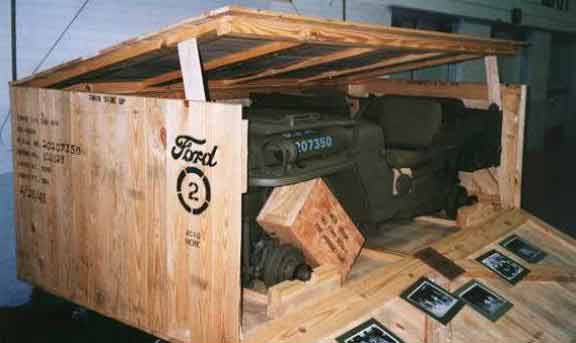Schwarz
View current page
...more recent posts
The Jazz Loft Project
Jazz in the Flower District:
Photographer W. Eugene Smith moved into a loft at 821 Sixth Avenue, in the heart of New York’s Flower District, in 1957. The place had already become a hangout for artists, writers and especially jazz musicians, who rehearsed and jammed there. Among the visitors to the loft: Thelonious Monk, Zoot Sims, Bill Evans, Steve Swallow, Mose Allison, Bob Brookmeyer and hundreds more, over a period of about 8 years.
Four Thousand Hours!:
As Smith settled in and made a home and studio there, he became fascinated – and some say obsessed – with the life in and around the loft. He began to document the activity there in photographs and audio tapes. By the time he left the loft in the late ‘60’s, he’d shot 40,000 photos of musicians, artists, empty rooms, views out the window, jam sessions and parties. He’d recorded roughly 4000 hours of audio tape, including rehearsals for the famous 1959 Big Band concert at Town Hall, featuring the Thelonious Monk Tentet, as well as hundreds of jam sessions among players, known and obscure. Along with the music: conversations, meowing cats, casual visits from the cop on the beat, television and radio programs that happened to be on while the tape was running.
The Project:
Sara Fishko and WNYC, in collaboration with partners at the Center for Documentary Studies at Duke and the New York Public Library, are building a radio series from the tapes of loft life discovered in W. Eugene Smith’s vast archive.

missing table and chairs
justin found this
whole tree architecture
beware the free chair
bay ridge gingerbread house
via aw and brownstoner
Claude Lévi-Strauss, the French anthropologist who transformed Western understanding of what was once called “primitive man” and who towered over the French intellectual scene in the 1960s and ’70s, has died at 100.
pressed penny
The legend begins with Erwin George Baker. Baker was born in Indiana in 1882. Throughout the 1930s, he became an extremely popular motorcycle and automobile race driver. Cannonball BakerAmong the many accomplishments in his prestigious career; he won the first ever race at Indianapolis Motor Speedway in 1909, placed 11th in the 1922 Indianapolis 500 and became the first commissioner of NASCAR. However, he gained his greatest notoriety in 1915 after a New York to Los Angeles drive which took 11 days and 7 hours. It was this intercontinental drive that earned him the nickname “Cannonball” after the famous Illinois Central railway car, “The Cannonball”. In 1933 he would make the cross country trek again, but this time, he’d do it in only 53 hours and 30 minutes, a record that would stand for almost 40 years. “Cannonball” Baker would pass away in 1960 as one of the most revered and popular automobile and motorcycle drivers of all time. He was inducted into the Motorcycle Hall of Fame in 1998.
Brock YatesFast forward to 1968. Brock Yates is an executive editor for Car & Driver magazine. He writes a scathing article called “The Grosse Pointe Myopians”, which critiques the auto industry, its management and its products which makes him infamous within the auto industry. Then, in 1971, Yates, along with fellow Car & Driver editor Steve Smith, decides to create an unofficial, and illegal, intercontinental road race. Inspired by the travel records of Erwin “Cannonball” Baker, the race begins in New York and ends in Redondo Beach, CA. Officially dubbed the Cannonball Baker Sea-To-Shining-Sea Memorial Trophy Dash, the race would serve as a celebration of the US national highway system and also a protest of the soon-to-be passed 55mph speed limit. Yates wanted to prove that careful drivers can safely navigate this country’s interstate system at high speeds in much the same way the Germans do with the Autobahn. Yates also believed that if Erwin Baker could complete the journey in a record time of 53 hours and 30 minutes over unfinished roads and horrible conditions, then a modern driver should have no problem doing it over the uninterrupted expanse of the national interstate system.
Does anyone now believe that Modernism in any of the arts simply disappeared into a black hole in order to make room for Postmodernism? You don’t have to go back far in time to discover trendy architectural academics that were promulgating variations on this theme. As a result of this massive historical distortion codified both in highbrow architectural journalism and college texts, some lesser known architects dedicated to thinking of Modernism as an ever-regenerative mind-set and rigorous tool kit for bold design were marginalized. And among the most talented? Gunnar Birkerts.
My first experience of Birkerts’ architectural power was during a visit to the Kemper Museum of Modern Art and Design in Kansas City. Overshadowed by the nearby Nelson-Atkins museum, it must be the most overlooked small museum in the U.S. Gunnar Birkerts: Metaphoric Modernist offers a fine assortment of Birkerts’ plans: initial and finished drawings and clear color photographs of the Kemper. Martin Schwartz, whose commentary fills most of this text, describes the Kemper as “muscular and assertive even if it is only about 23,000 square feet in area. One observer is reported to have called this museum, ‘the biggest little building he ever saw.’” I would concur – and add that the interior spaces possess a swooping vertiginous dynamism wholly appropriate to the Kemper’s collection. Think of an architect influenced by Aalto who brings to that Northern European austere sensibility the flash and dash of Futurism.
esquerita rules
the hound
twentinox sierra papa large chain mail
milk design stairs and rails
bebo y chucho valdes

KOKO architektid fahle house
marmol radziner prefabs
c. 1765 PELATIAH LEETE, III HOUSE, GUILFORD CT
via amy wilson
altered images
Musician Chris Butler was looking for a house where he could make loud music without disturbing his neighbors. He found the perfect house and for a deal, but it came with certain "conditions." The house was the childhood home of Jeffrey Dahmer and the scene of Dahmer's first killing.

the car talk guys were yacking about the legend of the $50.00 army surplus jeep in a crate packed in cosmoline.
via jeepparts
restore antique meat slicer blog
ni-3 cube end table
stunningly wild collection of hand made glass objects by andy paiko including his absinthe fountains
via vz
"Like an echo from the caves of coccamaura, i came forth whilst Dierdre wept cool tears” – from a celtic fairy tale. The bust, "Deirdre" was a true collaboration between the two of us. Mr. Little presented Mr. Sellers with the concept of crafting a weeping bust that cried tears of wax. Mr. Sellers sculpted the bust based on a neo-classical inspiration. The functionality of the piece is quite remarkable as the back of the sculpture is carved on an angle allowing for the melting wax to flow through the opening of the eyes.via vz
Chip Taylor attended Archbishop Stepinac High School in White Plains, New York. After an unsuccessful attempt to become a professional golfer, Taylor entered the music business. He wrote and composed pop and rock songs, both alone and with other songwriters including Al Gorgoni (as the duo Just Us), Billy Vera, Ted Daryll, and Jerry Ragovoy.interviewed and featured on michael shelly wfmu
Taylor's best known songs are "Wild Thing", which was originally recorded in 1965 by Jordan Christopher & The Wild Ones but became best known as a 1966 hit single for The Troggs (and a 1967 live performance by Jimi Hendrix), and "Angel of the Morning", a hit first for Merrilee Rush in 1968, and then becoming an even bigger hit in 1981 for country-pop singer Juice Newton (whose single sold more than a million copies in the United States). Other Taylor compositions that made entries onto the pop and country charts include "He Sits at Your Table" (Willie Nelson), "I Can't Let Go", "The Baby" (The Hollies), "Worry" (Johnny Tillotson), "Make Me Belong to You", "I Can Make It With You" (The Pozo Seco Singers, Jackie DeShannon), "Any Way That You Want Me" (The Troggs, Evie Sands, Juice Newton), "Step Out of Your Mind", "Country Girl City Man", "I'll Hold Out My Hand", "Try (Just a Little Bit Harder)" (Janis Joplin) and "Lonely Is As Lonely Does" (The Fleetwoods). Country hits written and composed by Taylor include "Sweet Dream Woman" (Waylon Jennings), "A Little Bit Later On Down the Line" (Bobby Bare) and "Son of a Rotten Gambler" (Emmylou Harris, the Hollies, Anne Murray).
